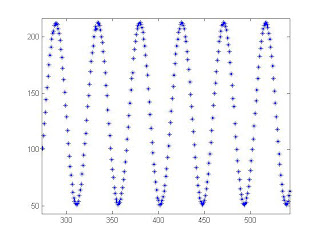
Zener diodes are diodes that have the characteristics to channel electrical current flowing in the opposite direction if the applied voltage overshoot “voltage damaged” (breakdown voltage) or “Zener voltage”. This is different from ordinary diodes which only transmits electrical current to one direction.
Diodes normally will not allow electric current to flow in opposite if fed-back (reverse-biased) below the breakdown voltage. If you exceed the limit of breakdown voltage, normal diode will be damaged because of excess electrical current that causes heat. However, this process is reversible if done within limits. In the case of rationing-forward (in accordance with the direction of the arrow), this diode will provide voltage falls (voltage drop) of about 0.6 Volt ordinary silicon diode. Voltage drop depends on the type of diode used.
A Zener diode has characteristics similar to ordinary diode, except that this tool is deliberately made with a much reduced tengangan damaged, called Zener voltage. A Zener diode has a pn junction which has a heavy doping, which allows electrons to penetrate (tunnel) from the valence band p-type material into the conduction band n-type material. A zener diode is fed through a broken behavior will exhibit a controlled and will pass an electric current to keep the voltage falls to keep the zener voltage. For example, a 3.2 volt zener diode will show a fall in the 3.2 Volt voltage if given the supply and forth. However, because the current is not constrained, so that the zener diode is typically used to generate a reference voltage, or to stabilize the voltage for small flow applications.
A Zener diode is a type of diode that permits current not only in the forward direction like a normal diode, but also in the reverse direction if the voltage is larger than the breakdown voltage known as "Zener knee voltage" or "Zener voltage". The device was named after Clarence Zener, who discovered this electrical property.
A conventional solid-state diode will not allow significant current if it is reverse-biased below its reverse breakdown voltage. When the reverse bias breakdown voltage is exceeded, a conventional diode is subject to high current due to avalanche breakdown. Unless this current is limited by circuitry, the diode will be permanently damaged. In case of large forward bias (current in the direction of the arrow), the diode exhibits a voltage drop due to its junction built-in voltage and internal resistance. The amount of the voltage drop depends on the semiconductor material and the doping concentrations.
A Zener diode exhibits almost the same properties, except the device is specially designed so as to have a greatly reduced breakdown voltage, the so-called Zener voltage. By contrast with the conventional device, a reverse-biased Zener diode will exhibit a controlled breakdown and allow the current to keep the voltage across the Zener diode at the Zener voltage. For example, a diode with a Zener breakdown voltage of 3.2 V will exhibit a voltage drop of 3.2 V if reverse bias voltage applied across it is more than its Zener voltage. The Zener diode is therefore ideal for applications such as the generation of a reference voltage (e.g. for an amplifier stage), or as a voltage stabilizer for low-current applications.
The Zener diode's operation depends on the heavy doping of its p-n junction allowing electrons to tunnel from the valence band of the p-type material to the conduction band of the n-type material. In the atomic scale, this tunneling corresponds to the transport of valence band electrons into the empty conduction band states; as a result of the reduced barrier between these bands and high electric fields that are induced due to the relatively high levels of dopings on both sides. The breakdown voltage can be controlled quite accurately in the doping process. While tolerances within 0.05% are available, the most widely used tolerances are 5% and 10%. Breakdown voltage for commonly available zener diodes can vary widely from 1.2 volts to 200 volts.
Another mechanism that produces a similar effect is the avalanche effect as in the avalanche diode. The two types of diode are in fact constructed the same way and both effects are present in diodes of this type. In silicon diodes up to about 5.6 volts, the Zener effect is the predominant effect and shows a marked negative temperature coefficient. Above 5.6 volts, the avalanche effect becomes predominant and exhibits a positive temperature coefficient. In a 5.6 V diode, the two effects occur together and their temperature coefficients neatly cancel each other out, thus the 5.6 V diode is the component of choice in temperature-critical applications. Modern manufacturing techniques have produced devices with voltages lower than 5.6 V with negligible temperature coefficients, but as higher voltage devices are encountered, the temperature coefficient rises dramatically. A 75 V diode has 10 times the coefficient of a 12 V diode.
All such diodes, regardless of breakdown voltage, are usually marketed under the umbrella term of "Zener diode".















































